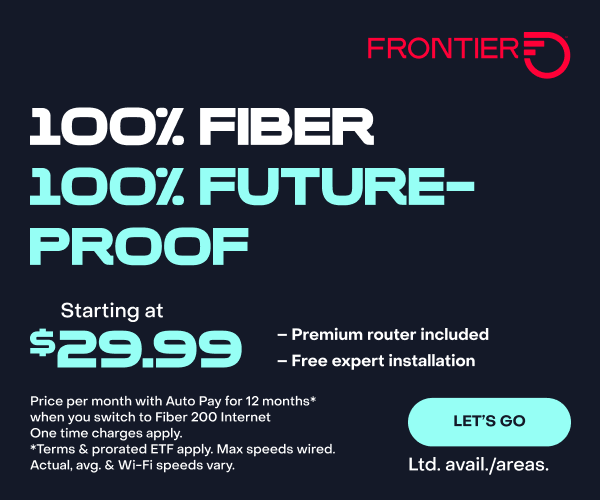
How Fiber Internet Will Keep Up With the Pace of Technological Advancements
Fiber internet is a dependable way to get a fast, stable internet connection. Fiber optic cables that are being laid in the ground today are expected to last at least 20 to 40 years. If you are thinking about upgrading to a fiber connection, don’t worry. Your fiber connection Is a smart choice.
How to optimize a high speed internet connection
Make sure you have what it takes to get lightning fast internet speeds:
- A fast internet connection to your home. Something like a fiber gigabit internet service is perfect, so that’s the example that I’ll use. But a 2 Gig or 7 Gig connection would be even faster.
- A router that can support high speed internet. A gig fiber connection is really fast. But unless you have a router that supports Wi-Fi 6, Wi-Fi 6E or Wi-Fi 7, your home Wi-Fi connection may be slower than your fiber connection is capable of reaching. In the real world, Wi-Fi 4 routers offer internet speeds of 130 to 150 Mbps—that’s less than a sixth of your Gig fiber speed. You can get faster speeds using Ethernet cables, but that means hardwiring your devices to your network.
- Devices that can support fast speeds. It’s not just your router that needs to support the latest Wi-Fi standards. Older wireless devices can still connect to a modern network, but they won’t get the same speeds (and if they’re really old, can slow your network down). Even devices that you can connect over an Ethernet cable, like games consoles and laptops, are often limited to 1 Gbps by their Ethernet port.
And that’s just on your end. Your internet service provider (ISP) provides a network with these features set up to support high speeds:
- Optical network terminals capable of high speed. The box you plug your router into is important! It’s what converts the light-based fiber signal into an electrical signal your devices can understand.
- Cables capable of high speed. All your internet data travels along the cables from your home (or your wireless providers’ nearest tower to your ISP’s local base station.
- ISP infrastructure capable of managing large numbers of high speed connections. Your ISP uses powerful computer technology to manage everyone’s internet connection and make sure all the data is getting passed back and forth.
So, why am I telling you all this?
Because in the long, complicated chain of devices and cables that connect your smartphone to the internet, the fiber cables are a critical link. Right now, they’re physically capable of providing the bandwidth to support all the links in the chain. Let me explain.
Light transmits data
To transmit data, lasers shoot incredibly rapid modulation of light through the fiber cable. This is why there are millions of miles of underwater fiber optic cables transmitting data between continents. Fiber is an efficient way to do it.
Fiber is durable
While fiber optic cables might sound fragile, they’re surprisingly durable. The fiber optic strands are wrapped in multiple layers of protective cladding and, where possible, they’re buried underground.
What’s to come: Research keeps making fiber faster
Fiber is already blazing fast. One of those undersea cables can transmit data at 400 terabits per second or 400,000 times faster than a home gig fiber connection using 16 pairs of fiber optic wire. But here’s the thing: Researchers have now sent a signal just as fast using a single fiber optic strand. Even though fiber is fast today, it can still keep bringing faster speeds over the same fiber to a home, as technological advancements move from research labs to the real world.
Home internet fiber broadband is just the tip of the iceberg
Fiber optic cables form the backbone of the internet. As well as those undersea cables, fiber optic cables connect ISPs and data centers on land. Even if you use your smartphone or a wireless fixed broadband provider, the 5G cellular network only carries your data for a tiny portion of its journey. Most of the time, the data is traveling through a fiber cable.
All this means that researchers and companies are fully committed to fiber technology. As the internet backbone gets faster, the same tech will trickle down to home users. You might not have a 400 terabit per second connection, but you might be able to get a 7 Gig connection.
Your internet infrastructure is upgradeable
As we talked about at the start, fiber optic cables are a strong link in the internet data chain. As you upgrade your devices and need a faster connection, this link can stay the same.
Frontier Fiber is built for the way you live today—and tomorrow
If you’re still on the lookout for the right ultrafast internet connection for streaming, gaming, working from home and running your smart home—all with enough bandwidth for everyone—find out about Frontier Fiber. Frontier Fiber is available in select areas—check here to see when it’s available at your address.
Product features and availability may have changed and are subject to change.



